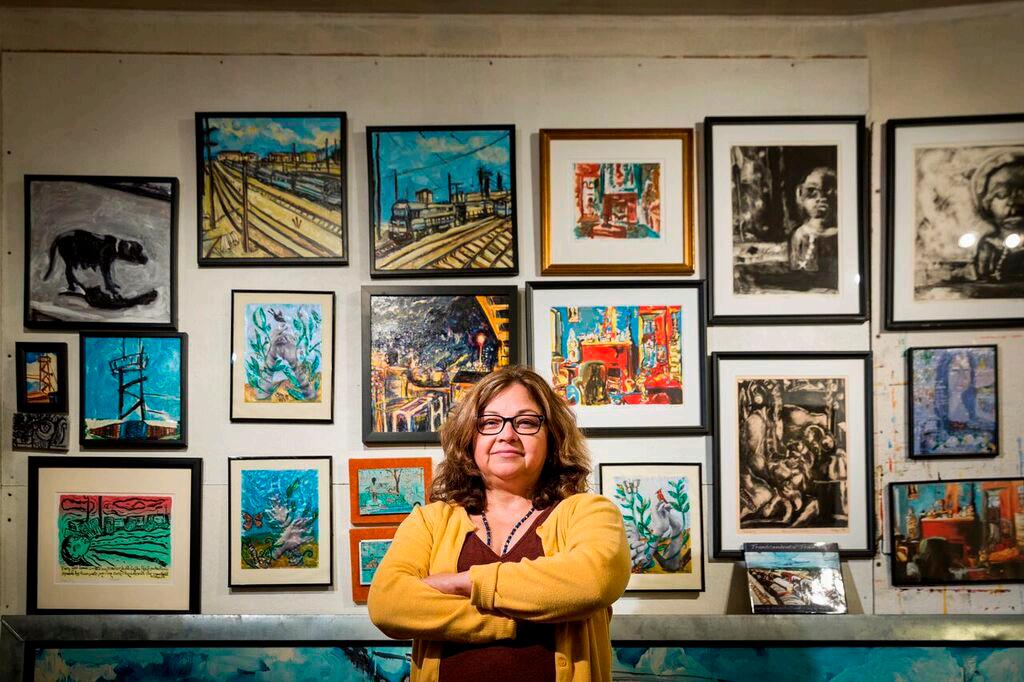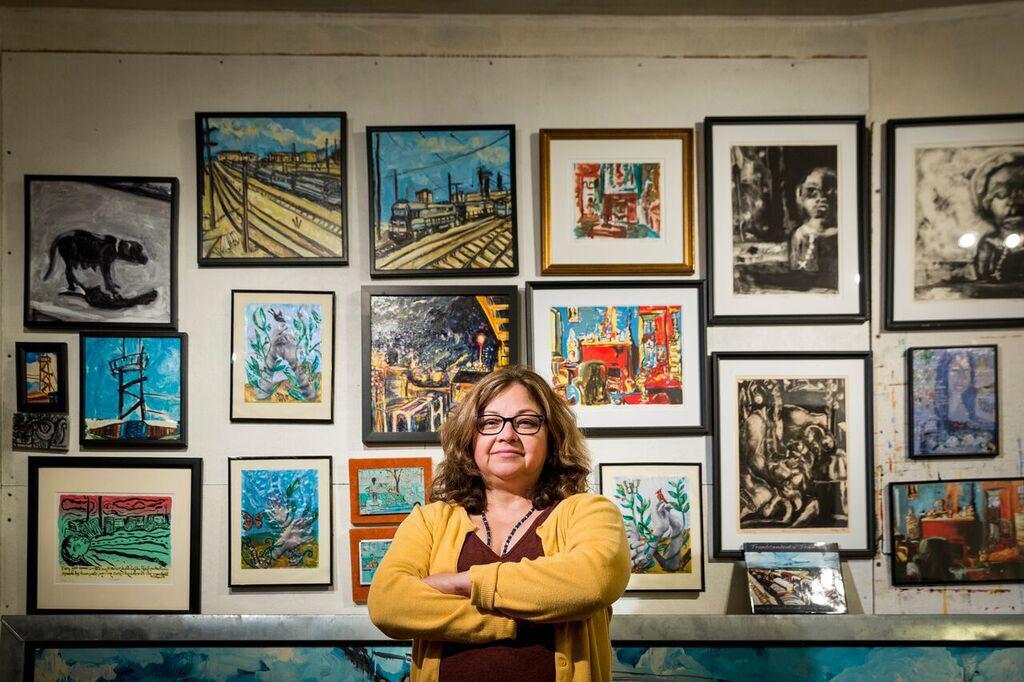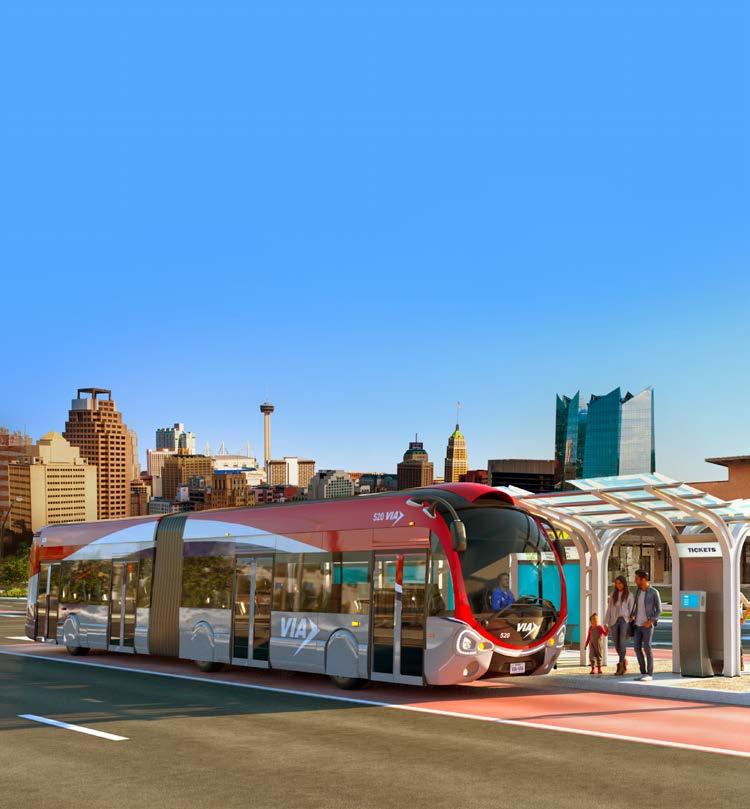
7 minute read
Let’s Talk About It Tailgating
Did you know one car length for every ten miles an hour is considered safe driving? So if you're doing 55 miles an hour you should have six car lengths between you so that if something happens to the car in front of you, you have time to stop or react. It amazes me how many people do not know that or practice it. Today I had a call about someone who almost got rear ended. The person who almost hit him followed him and told him he needed to watch how he braked because he almost hit him. The man was tailgating him. Has this ever happened to you? Let's talk about it…
Ramon Chapa Jr.: “A lot! People are always in a hurry! Usually, it's some lady in a BMW, Mercedes whose husband is a doctor and they think everyone has to move out of their way!”
Sandra Luna Perez: “Yes my dad always used to tell us ‘the car in front of you doesn't want a push.’ Stay a car length away so you have time to brake if needed."
Roy Cruz: “Yup, especially on a motorcycle.. I was hit by another motorcycle from behind on a freeway... Don't ride or Drive too close to anyone.”
Yvette Elizabeth: “Yes! I was taught this by my dad: give yourself plenty of room in case you need to move out of the way quickly. I hate when people tailgate.”
Brittney Blakerson-Foster : “That’s one of the things that really pisses me off. I essentially live in the middle of nowhere here in Ohio. There’s no major areas within 20 minutes of where I am which means around my home there’s never much traffic. Because of this, I feel more comfortable going a bit quicker on certain roads as long as conditions are good. I’m not the type of person that goes 30 over, but when it’s a clear, sunny day, roads are dry I’ll go 65 in a 50–55 area. There’s not often many vehicles around, and even less officers around so I am comfortable going that speed. But when I’m already going 10 over and some Jackass decides to tailgate me, I just slow down. I don’t have many places I need to be at a very specific time and when I do, I plan accordingly with time to spare. If I am driving over the speed limit and you tailgate me, I’m slowing down to the speed limit. There’s really no need to be speeding in the first place. If you didn’t plan well and are running late, that isn’t my fault. That’s entirely on you. I get to places on time and I don’t tailgate others in the process. Most of my vehicles have dashboard cameras that also record out the rear window. I haven’t
On the Highway
been hit yet, but if I do I’ll turn that video into the police and insurance companies. I drive normally, just fast sometimes. I don’t do stuff that puts my life, the occupants of my vehicle's lives and other lives in danger.”
Cole Thompson: “It can be frustrating if you think about it (why is this person tailgating me? Grrr…) but by far the best thing is to adopt a very Zen attitude, or as we say in California, “whatever, dude.” If there’s an opportunity to let a tailgater pass, make it easy for them. Then they go away and are out of your life - you won! Karma eventually catches up to people who drive too close. Sooner or later, a person who tailgates aggressively will not react fast enough to a slowdown, and will at a minimum crunch their front end (expensive) or get hurt (painful and life changing). The same people who tailgate are going to tend to be the same people who take curves a little too fast on roads with patchy ice, and so on. Pity them. Their lives will be filled with unnecessary repair and expense, higher insurance rates, endless traffic tickets and fines, loss of license, blood and shock, and perhaps even death. Stay calm, sigh, and say “whatever, dude” and let the reckless people find their reckless end on the road far ahead of you.”
John Helmke: “Coming out of town on my way home, a cop was tailgating me so close I could not see the front of his car. Having friends when I lived in NJ who were troopers, I knew this was a tactic to get you to speed up and then get pulled over for speeding. I just set the cruise control for 45 mph (speed limit) and he continued his arrogant behavior until I hit him with the windshield washers and he then backed off and a few hundred yards later did it again. We have heavy deer around this road and I was praying for one to show up so I could jam his ass with a sudden stop. He actually followed me right to my house (same road ) before he continued on. Total jerk and people wonder why I don’t like cops.”
Chris Rapier : “I brake check tailgaters. That said, I just flick the brakes very lightly to make the lights come on - I’m not actually slowing the vehicle by any appreciable amount. It’s more to give them a heads up than anything else. Anyway, I only do it when I don’t have the option to just change lanes and then pass.”
Dave C : “First thing to do is make sure you are not the problem; Are you maintaining flow? If your speed is not the issue then move over and let them by you if you can do so safely. When that is not possible (think heavy freeway traffic), then start letting that car ahead of you creep further ahead. Space is your friend. If the traffic ahead of you stops suddenly, you want as much room as possible in front of you. The bumper polisher behind you is counting on no one making a mistake. So, you’re braking for two!”
Brett Harper: “The best is a hand gesture, but not the one you're thinking of. My dad taught me a trick that works 80% of the time and it only fails when the other driver doesn't notice you doing it. It works for a car tailgating you, for cars driving too slow in the passing lane and impeding traffic, and if someone is driving like a maniac and swerving in and out of each lane.Just give the driver a thumbs down. Hold it out the window for a few seconds and it will work every time. No one responds to a horn or a middle finger, but the thumbs down says ‘I disapprove and am disappointed.’ I can guarantee it will work better than any brake check.”
Marius Frost: “If they rear-end you, they might pay for it, but it would also put your life at risk, and put you through endless hassle. Not to mention that it doesn’t matter who pays for it, because it increases insurance premiums in general.The reason you pay what you do for insurance, is because of the countless morons before you who have crashed their car and cost the insurance companies money. What would you do if you were walking down the sidewalk and someone started waving a knife or gun around while walking beside you? You’d probably get a little pissed. It’s the same thing.”
Brett Scott Gentry: “Tailgating greatly increases the risk of accident. The only time I'm ever following too closely is when someone has just changed lanes into the safety gap between me and the guy in front. When this happens, I have to slow down to create a new gap between me and the new guy in front. But for about ten seconds, I'm too close while I'm trying to create a safety gap without slamming the brakes.”
Jim Burks: “Probably the best, easiest and safest thing would be to get your stupid butt into the RIGHT lane where slower traffic should be and stop blocking faster traffic in the LEFT lane. In the US, we have road signs that state “SLOWER TRAFFIC KEEP RIGHT”. Only a jerk would block faster traffic just because they can. Number one cause of Road Rage, block me, I'll see you on the road.”
Odell Johnson: “# 1-They are somewhat reckless and you should move over to let them tailgate the next driver. #2-You are impeding traffic and should move to the right lane instead of blocking the passing lane(which is illegal).”
About the Cover Artist: Marta Sanchez
Bio and Photo Courtesy of artedemarta.com
Born and raised in San Antonio, Texas, Chicana painter Marta Sanchez has been inspired by traditional Mexican folkloric art expressions and contemporary issues. Her works on paper are mostly linocuts and monotypes, which follow the social and cultural traditions of Mexican and Chicano/a Art. Her paintings are mainly on tin or industrial corrugated metal. The materials, scale, and issues connect to present day concerns.

Marta has been working on a series of paintings of the San Antonio train yards near her childhood home. Through these paintings, she explores the role of trains in the Mexican migration through the Southern Pacific. Carpas, traveling circus and vaudeville troupes that performed throughout Mexico, are the inspiration for another series that has captivated Marta’s creative energies. Wings Press published a book on the collaborative suite of Carpa related serigraphs titled Transcendental Train Yards. The collaborative suite was created with Chicana poet and folklorist, Norma E. Cantú.
Her work is in the collections of The Philadelphia Museum of Art, The State Museum of Pennsylvania, The McNay Art Museum, The Fine Art Museum of St. Petersburg, Florida, and The National Museum of Mexican Art in Chicago. Marta’s work is part of actor/director Cheech Marin’s extensive private collection of Chicano art. She participated in “Chicano Visions: American Painters on the Verge,” which traveled throughout the United States from 2001 to 2006, as well as Mr. Marin’s exhibition, “Chicanitas/size does not matter,” featuring small works from his collection. Marta’s public art commissions can be seen in the Philadelphia area at Simons Recreation Center, and The Children’s Hospital in Montgomery, Pennsylvania. The most recent sculptural works for the northern part of the City of Philadelphia is a series of 100 feet steel installations titled “Reclaiming Gurney Street.
The piece was commissioned by the Hispanic Association of Contractors and Entrepreneurs to reclaim an opioid encampment to a public rails and trails project for the community.
Marta earned an MFA in painting from the Tyler School of Art, Temple University, and a BFA in painting from the University of Texas at Austin. She taught at the Philadelphia Museum of Art for over seventeen years and now teaches at St. Joseph University. She is co-founder of the grassroots organization “Cascarones Por La Vida,” which assists families affected by HIV/AIDS. Her work is currently archived at the Benson Latin American Collection at the University of Texas at Austin.
El crecimiento de San Antonio significa más gente, más lugares y más oportunidades. Para saber cómo VIA sigue el ritmo de este crecimiento con proyectos como el Tránsito Rápido Avanzado, visite KeepSAMoving.com








